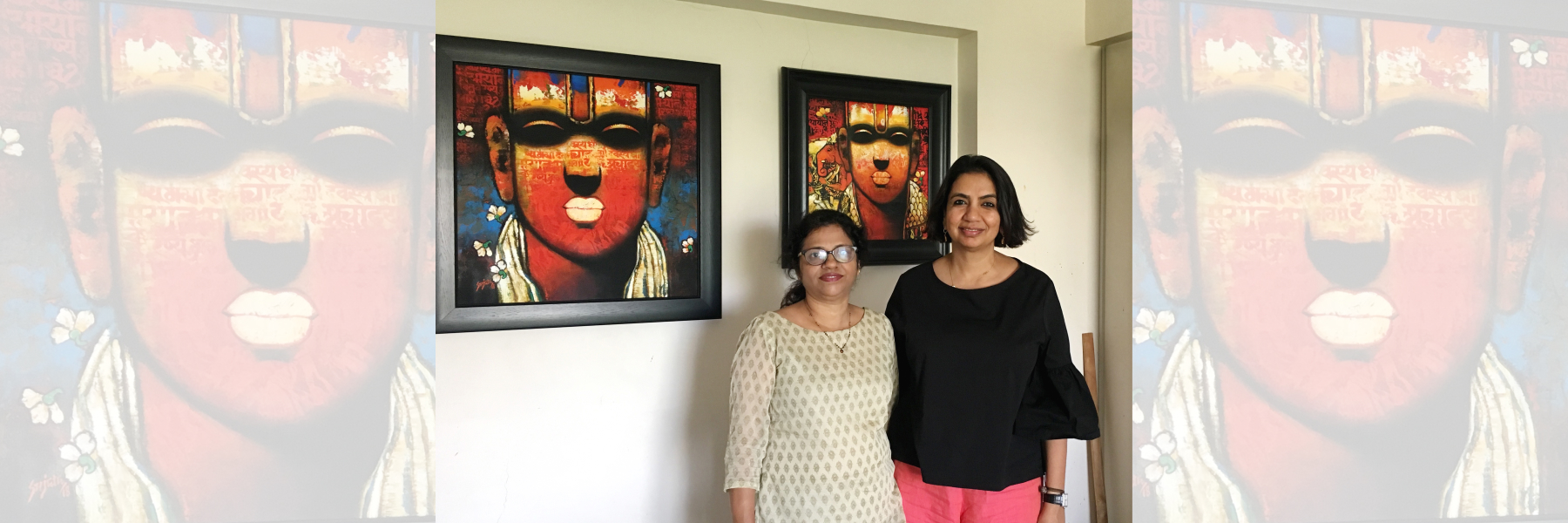
Sujata Achrekar: Finding Her Artistic Voice through Meditation
A feeling of profound peacefulness radiates from the paintings of artist Sujata Achrekar. Her portraits depict Brahmin Brahmacharis, or spiritual disciples who seek liberation, with their eyes closed in deep meditation. Her striking paintings are elaborately layered with ‘slokas’ in Devanagari script, ‘yantras,’ flowers and even deities, as well as layering various techniques like scratching, overlapping, scrubbing, rolling and writing to achieve a rich texture of her canvases.
In conversation with art writer and historian Sandhya Bordewekar, Sujata shares her gratitude for being born an Indian and her love for all things traditional.

In her own words, Sujata tells her story:
On my family legacy
We are from the coastal Konkan region of Maharashtra, both from my parents’ side and my husband’s side. However, I grew up in Mumbai where my father managed our family’s modest goldsmith’s shop. While I am fond of jewelry, what always attracted me since I was a girl was watching my grandfather painstakingly craft silver metal into ‘taks’ — small, flat relief images of gods and goddesses and of their footprints and handprints. Konkan homes almost always have ‘taks’ placed and worshiped in the home ‘devara’ (temples). These little ‘taks’ were beautifully illustrated and decorated. A number of them can now be found in antique jewelry shops where they are sold as pendants.
On the support from home
There are a few artists in my family — one of my uncles was a very good artist, and I never tired of looking at his old notebooks, which were filled with beautifully rendered anatomical sketches. My older brother also studied applied art and went on to work in an ad agency.
I loved drawing and appeared for various school-level drawing exams, bagging many awards. I followed in my brother’s footsteps and applied for art school, but he convinced me to go for a fine art or art teacher’s diploma instead of applied art. At that time, I was very angry with him, as I did not want to be a teacher and I did not have much confidence to opt for fine art. I thought I would do well in applied art. But my brother advised me that work challenges in an ad agency are tough and involve long hours, sometimes working on holidays. He felt that I might find that difficult to handle when I married and started a family. A very practical way of approaching things! But looking back, I realize how correct and valuable that advice was… So, I selected to study fine art.
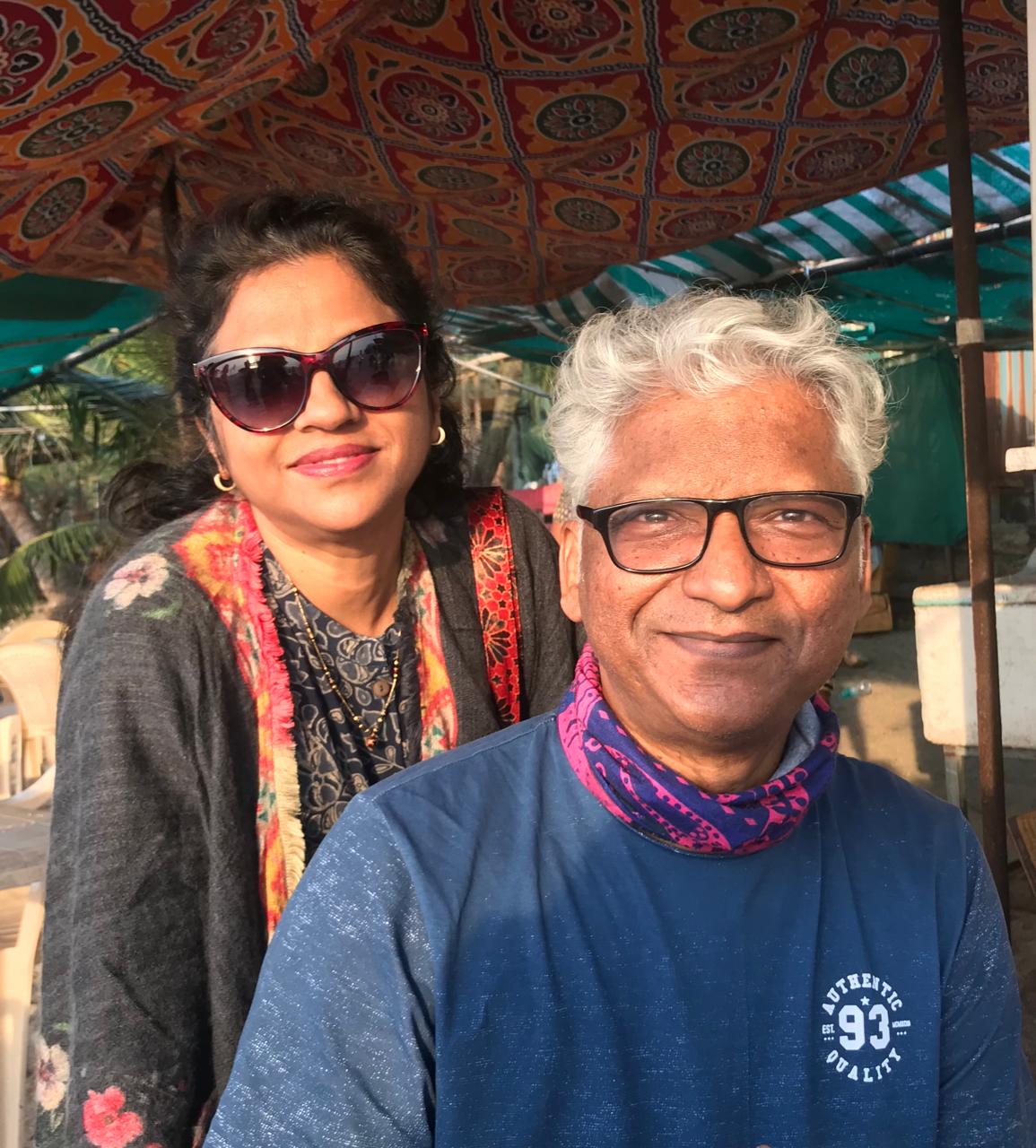
On my teachers and seniors
Vijay Achrekar (whom I later married!) was two years my senior when I was at the LS Raheja School of Art. He was very good at his work, even as a student, and very helpful. I would look up to him for any inquiries I had.
After I finished art school, I joined Sir J.J. School of Art’s Diploma in Art Education, since at that time I felt an art teacher’s job would be good enough for me. But wonder of wonders, I was offered a job to teach at the J.J. School itself! I did that for 12 years, only giving it up in 2003 when I decided to devote myself completely to painting. But those were good years at J.J. — the atmosphere was very lively, and the students were innovative. Students can teach you a lot, you know! Among the teachers there, I learned a lot from Nikam Sir and Ravi Mandalik Sir, both celebrated artists who practiced what they preached. They taught by example, not explanation.
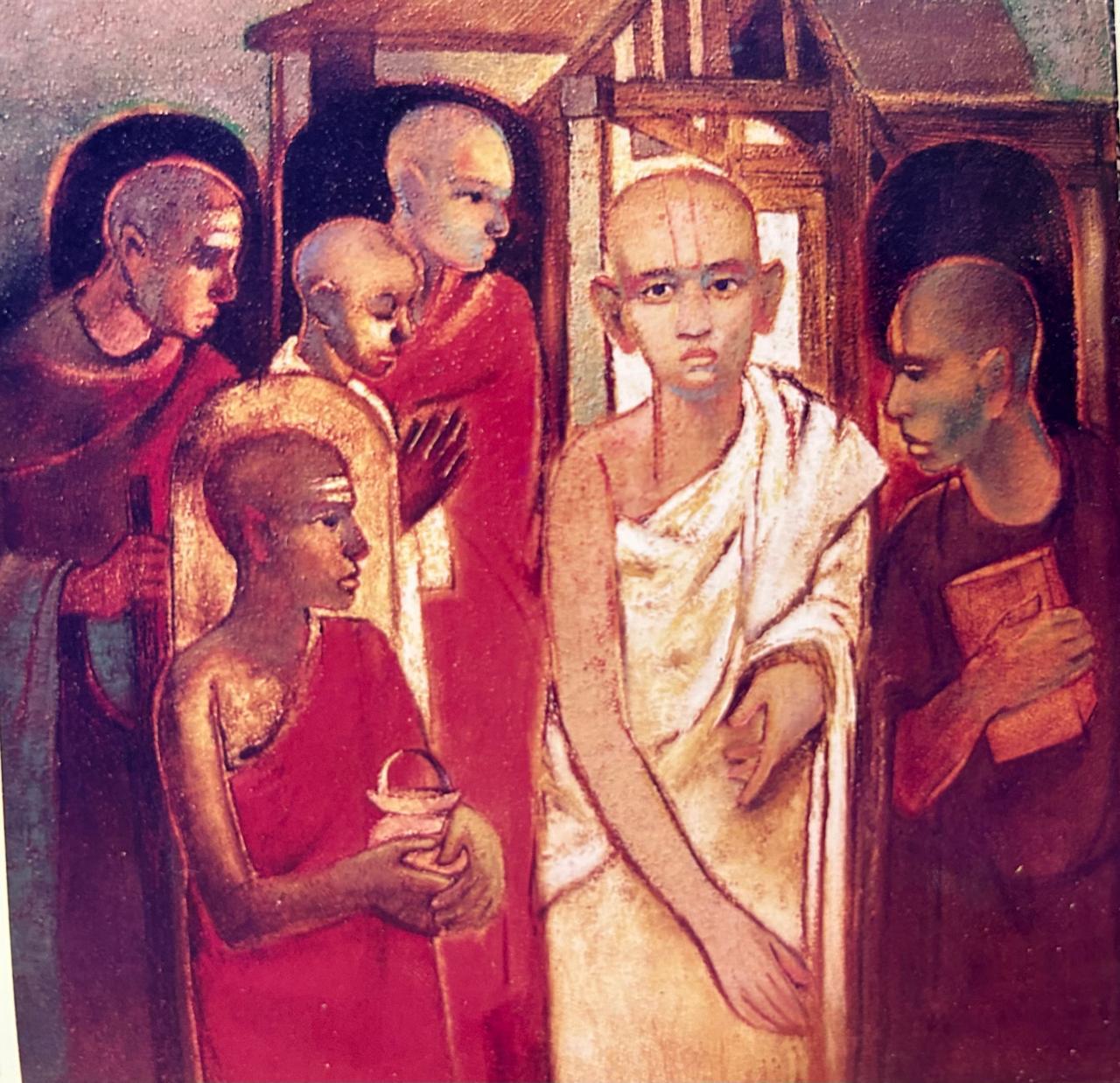
The turning point
My marriage was the most important turning point in my personal life and my career as an artist. Vijay Achrekar was a successful artist, and he continuously but gently persuaded me to give up teaching and concentrate on being a full-time artist.
With much hesitation, I planned my first solo show at the Jehangir Art Gallery in the 1990s. It was a strange mix of all the different kinds of paintings I did and had not yet settled down to a style or specific themes. But the encouraging part was that the show was much appreciated! I sold a number of works, and four were picked up by the late Parmeshwar Godrej, the eminent Mumbai socialite-philanthropist belonging to the Godrej industrial family. From that time onwards, there was no looking back.
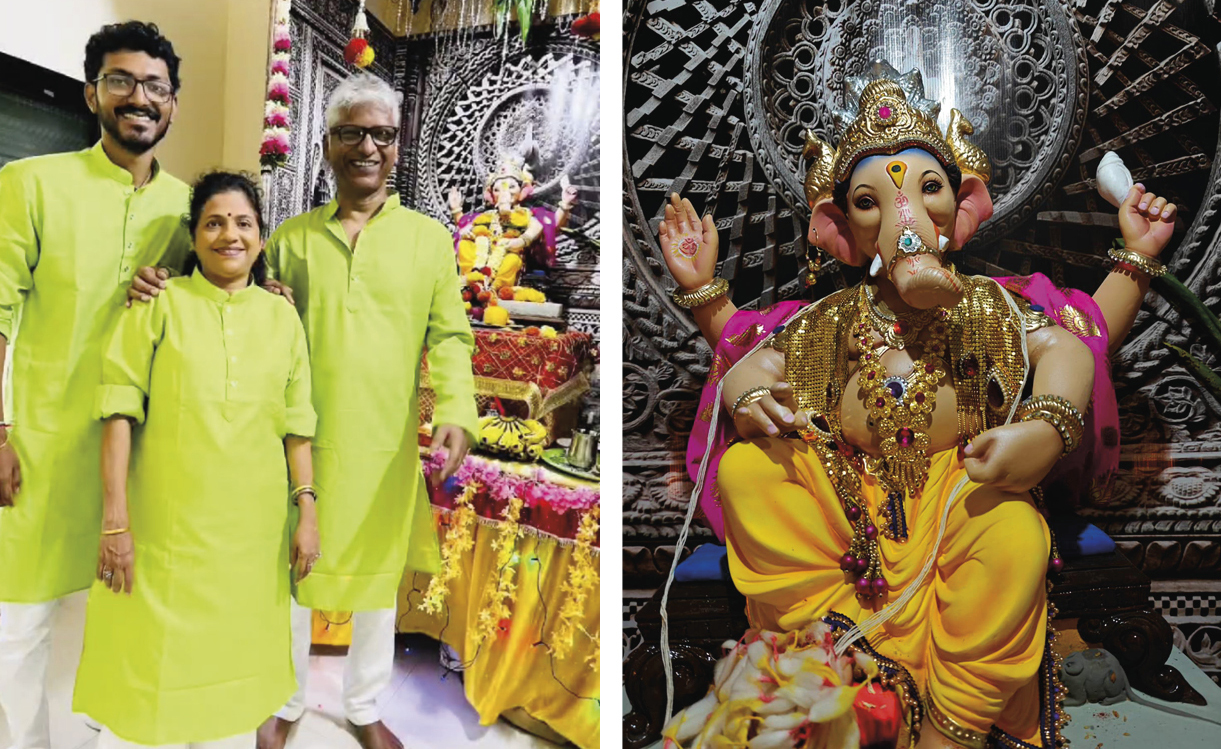
On embracing the spiritual
Before I met Vijay, I led an ordinary, happy-go-lucky life. Vijay introduced me to Vipassana, an ancient technique of meditation believed to be re-discovered by Lord Buddha and taught by him as a universal remedy for universal ills. It has a code of discipline that those practicing the technique are taught to follow. Whenever Vijay talked to me of his spiritual experiences and how Vipassana had opened up his mind, I could not understand a word. Finally, I registered for the 10 day residential initiation program and found what a fantastic tool it is to quieten your mind and help you deal proactively with the challenges that life throws at you. Such a difference it has made to me! Now, I often go for refresher courses to help me stay on the Vipassana path.
Vijay, our son Atharva, and I all practice not just Vipassana, but other forms of meditation and ‘kriyas’ (yogic activities that cleanse the body) as well. In fact, during the long months of COVID that kept us confined to our homes, all three of us would get up at dawn and practice Vipassana and ‘kriyas,’ before we began with regular household chores that we had distributed amongst us! It helped us deal with that confused period in our lives with positivity and hope.
On the image of the Brahmin Man
It was in one such Vipassana session that the image of the Brahmachari Boy became stronger in my mind. In my first show, there was one work in which this image had already appeared. It was later strengthened many times over as I meditated.
That boy or image is not religious. It does not indicate any caste or the follower of any religion or religious sect. It could be anybody, any human, representing humankind. But it is a figure that has experienced divinity. And that experience is reflected through the golden-yellow glow on the face. Meditation creates the mind-space which allows you to reach a level of penance where the experience of divinity is possible. It comes automatically to those with ‘Bhakti bhava,’ which is a very high level of devotion that can lead you into a state of trance where you might imagine you are one with the object of your devotion.
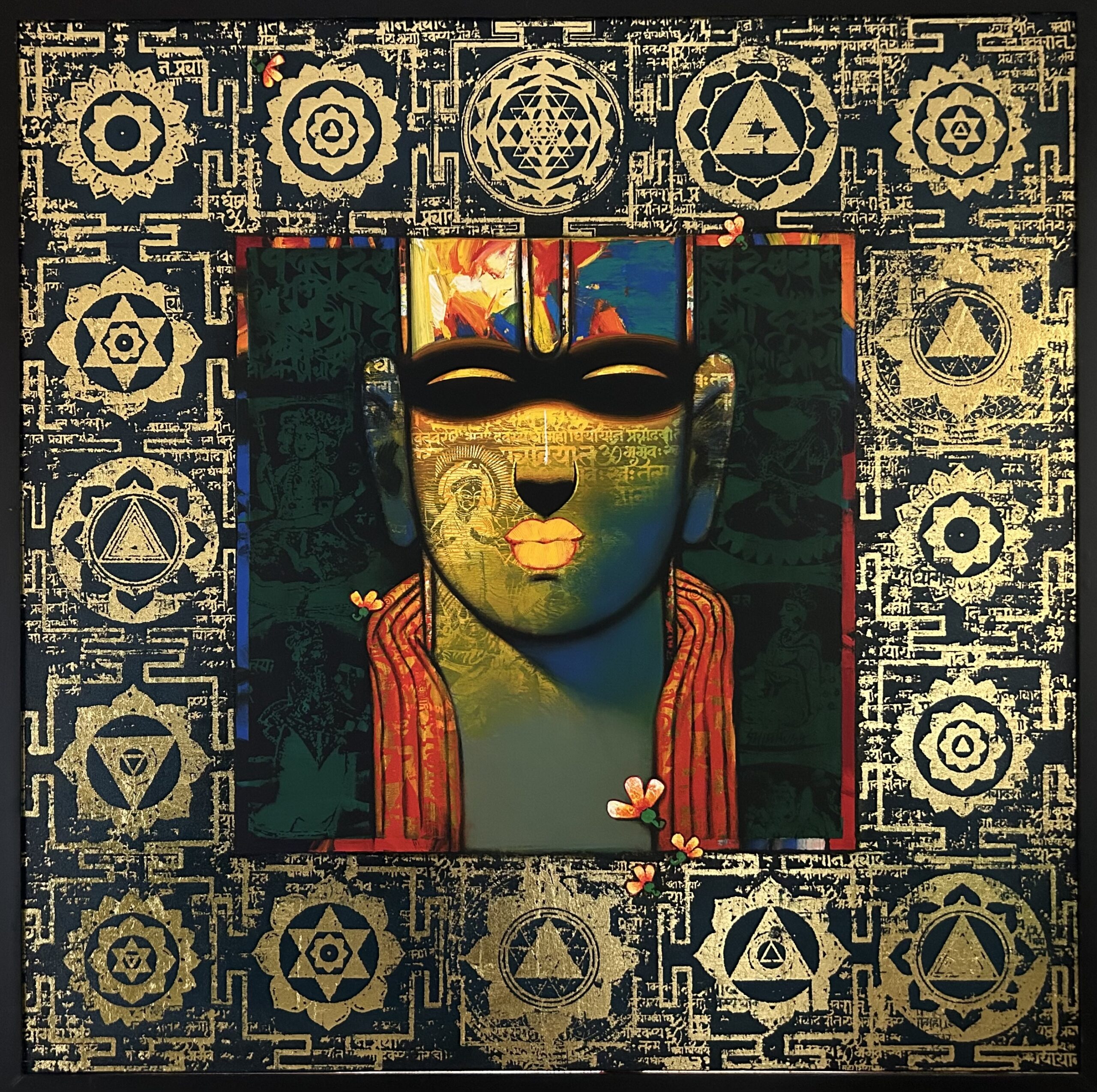
On my paintings
I had registered for the 4-year diploma in fine art when I first joined art school. Two years into the program, I began to have confidence in myself about my ability to sketch, draw and paint. I explored landscapes, life study, portraits and even abstract work. Somehow, I found myself more attracted to figurative work, especially doing portraits.
In fact, portraits became my favorite subject. The number of practice hours I had spent sketching people came to my aid when I began to focus on the Brahmachari image. Sometimes I use a ‘sloka’ (couplet) from the Gayatri Mantra or Ganpati Stotra (Hindu scriptures, but secular in their ideology) that I faintly etch on their foreheads or high cheekbones. I use gold and silver foil to heighten the glow I want to emanate from these beautiful faces that have experienced the divine. My paintings also feature images from the Dashavatara (10 reincarnations of Vishnu). I also sometimes use the holy ‘Yantras’ and ‘Chakras’ (sacred geometry) as the central image, and I am currently exploring these.
My studio is just a 5-minute walk from my home. There, I have a collection of old Bollywood songs that I love, as well as recordings of instrumental music and mystically sung ‘slokas’ and ‘stotras.’ I play them on low volume when I am working. It fills my work space with a happy aura!
On tradition
I am so grateful that I was born in a country as culturally rich and diverse as India, with its fabulous crafts, history of architecture, sculpture, miniature paintings, tribal art forms and Kalighat paintings. My art is informed by this humongous tradition that I have received as legacy and which comes to me naturally and organically. And I discover something new every day!

Thank you very much, Sujata.
To browse our curated collection of paintings by contemporary Indian artist Sujata Achrekar, visit https://laasyaart.com/sujata-achrekar. If you would like to make an appointment to see these works in person at our Indian art gallery in Palo Alto, please reach out at info@laasyaart.com or +1 650-770-9088.
— Sonia Patwardhan

Leave a Reply
You must be logged in to post a comment.